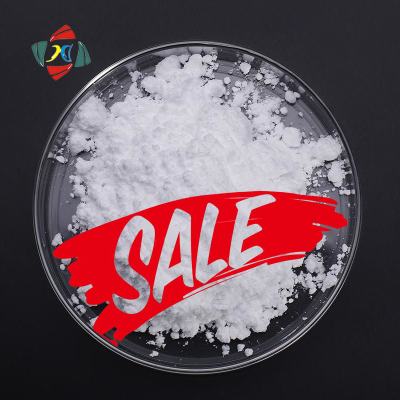-
Categories
-
Pharmaceutical Intermediates
-
Active Pharmaceutical Ingredients
-
Food Additives
- Industrial Coatings
- Agrochemicals
- Dyes and Pigments
- Surfactant
- Flavors and Fragrances
- Chemical Reagents
- Catalyst and Auxiliary
- Natural Products
- Inorganic Chemistry
-
Organic Chemistry
-
Biochemical Engineering
- Analytical Chemistry
- Cosmetic Ingredient
-
Pharmaceutical Intermediates
Promotion
ECHEMI Mall
Wholesale
Weekly Price
Exhibition
News
-
Trade Service
*For medical professionals only
Thrombolytic and anticoagulant therapy for stroke caused by atrial fibrillation
Cardioembolic stroke (CES), abbreviated as cardiogenic stroke, refers to a clinical syndrome in which emboli from the heart and aortic arch cause cerebral artery embolism through circulation and cause corresponding brain dysfunction, of which atrial fibrillation (AF) accounts for about 70%.
Principles of treatment of CES
Following the principle of "time is the brain", intravenous thrombolysis is performed within the treatment window, and bridging or direct mechanical thrombectomy is selected at the right time to reduce neurological damage
.
Aggressive treatment to prevent stroke recurrence due to atrial fibrillation and neurorehabilitation [1].
(1) For patients with non-valvular AF, warfarin and new oral anticoagulants (NOAC) can be used for stroke prevention, and NOAC
can be preferred.
(2) For patients with valvular AF, long-term warfarin anticoagulation
should be performed.
(3) For the type of AF, whether paroxysmal, persistent or permanent, anticoagulation therapy
should be selected based on the risk of thromboembolism.
(4) For high-risk stroke patients with non-valvular AF, there are contraindications to long-term oral anticoagulants, and left atrial appendage surgery
can be performed.
drug therapy
1.
Intravenous thrombolytic drugs and characteristics
It mainly includes recombinant tissue plasminogen activators (rt-PA, including alteplase and tenecteplase), urokinase[2].
Neurological function is completely or nearly completely restored within 3 months of intravenous thrombolysis of rt-PA within 3 hours after stroke; RT-PA intravenous thrombolysis within 3-4.
5 hours is still effective; Urokinase thrombolysis can be given within 6 hours of onset [3].
Table 1 Characteristics of thrombolytic drugs
Second, what do we need to pay attention to intravenous thrombolysis?
Thrombolysis needs to be performed
in an intensive care unit or stroke unit.Patients with high-risk bleeding tendency, easy bleeding constitution, history of intracranial hemorrhage, and significant bleeding disorders in the past 6 months are banned
.Strengthen blood pressure and frequency of neurological function assessment within 24 hours of thrombolysis, and if severe headache, severe hypertension, nausea or vomiting, or worsening neurological symptoms and signs occur, thrombolytic drugs should be stopped immediately and brain CT examination
should be discontinued.In patients preparing for thrombolysis, blood pressure should be controlled at systolic blood pressure < 180 mmHg and diastolic blood pressure < 100 mmHg, and patients with hypotension after ischemic stroke should actively seek and manage the cause, and use volume expansion and pressor measures if necessary<b10>.
After 24 hours of thrombolytic therapy, brain CT or MRI
should be reviewed before administering antiplatelet drugs or anticoagulants.Intravenous thrombolysis
is possible with warfarin anticoagulation with an INR < 1.
7 or prophylactic low molecular weight heparin.Avoid intravenous thrombolysis while taking NOAC (if you take dabigatran etexilate, perform thrombolysis after reversal of edazelizumab) (intravenous thrombolysis can be performed if renal function and coagulation are normal within 48 hours).
Blood glucose should be controlled between 2.
2 mmol/L and 22.
22 mmol/L
.
3.
How to activate anticoagulant drugs after thrombolysis?
The timing of initiation of anticoagulants in the acute phase of stroke and atrial fibrillation depends on the severity of the stroke, generally based on the stroke NIHSS score, anticoagulation is started using the 1-3-6-12 day principle, anticoagulation is assessed by CHA2DS2-VASc score (only for nonvalvular atrial fibrillation) to assess thromboembolic risk, and oral anticoagulants are used >2 points in men (>3 points in women); The HAS-BLED score is used to assess bleeding risk, but a high score is not a contraindication to anticoagulation, but a reminder to clinicians to try to control bleeding risk factors and strengthen the prevention and observation of bleeding complications, and the main oral anticoagulant (OAC) currently available for choice includes two, warfarin and a new oral anticoagulant (NOAC), and the dose of warfarin should be adjusted according to the international normalized ratio (INR) value [4].
How is the dose adjusted in use of warfarin?
Fig.
1 Dose adjustment of warfarin
Fourth, special population anticoagulation, how to use medicine?
In clinical treatment, children, pregnant women, lactating women, elderly patients, liver and kidney insufficiency, dementia and other comorbidities are often encountered, because of special own conditions, the pharmacodynamics and pharmacokinetics of drugs may change, so the selection of OAC and drug dose adjustment should be carefully considered
.
Figure 2 Precautions for the use of oral anticoagulants
NOAC dose adjustment in patients with chronic kidney disease
There is a two-way interaction between atrial fibrillation and chronic kidney disease (CKD): atrial fibrillation promotes the development or progression of CKD, and the incidence and incidence of atrial fibrillation increases
with reduced kidney function.
Renal function plays an important role in both the metabolism and elimination of NOACs, with dabigatran having up to 80 percent of renal elimination compared with 50 percent, 35 percent, and apixaban with edoxaban, rivaroxaban, and apixaban [5].
Fig.
3 Non-vitamin K antagonists were used for renal function: oral anticoagulants
5.
How to switch between oral anticoagulant drugs
Because vitamin K antagonists may take 5 to 7 days of INR to enter the therapeutic range and vary widely among individuals, it is important to ensure that anticoagulation is continued while minimizing the risk of bleeding when switching between anticoagulant therapies [5].
Switching from VKA to NOAC should first stop warfarin and monitor the INR value for 3-5 days, and enable NOAC according to INR; When switching from NOAC to VKA, both should be used until the INR reaches the target value, and the INR is tested again 24 hours after the NOAC is discontinued to ensure that the target intensity
of warfarin is achieved.
Figure 4 Switching between vitamin K antagonists and non-vitamin K antagonists oral anticoagulants
summary
Intravenous thrombolysis and/or endovascular therapy for stroke caused by atrial fibrillation should be performed within the acute treatment time window, and the timing of thrombolysis should be grasped to save the ischemic semi-dark band to the greatest extent possible and reduce neurological disability; For atrial fibrillation, anticoagulation should be aggressively pursued to prevent recurrence of stroke; For special populations, the risks and benefits of anticoagulation should be assessed in conjunction with the patient, and an individualized anticoagulation regimen
should be developed.
In addition, the management of patients should be strengthened, such as publicity and education, management of comorbid diseases, and careful combination of
medications.
References:
[1] Geriatric Neurology Group, Geriatrics Branch of Chinese Medical Association, Vascular Neurology Professional Committee of Beijing Neuroscience Society, Chinese Expert Consensus Group for Cardiogenic Stroke Treatment.
Chinese expert consensus on the treatment of cardiogenic stroke (2022)[J].
Chinese Medical Journal,2022,102(11):760-773.
DOI:10.
3760/cma.
j.
cn112137-20210712-01555.
[2] Chinese Medical Association, Journal of Chinese Medical Association, General Practice Branch of Chinese Medical Association, etc.
Guidelines for primary diagnosis and treatment of ischemic stroke (2021)[J].
Chinese Journal of General Practitioners,2021,20(9):927-946.
DOI:10.
3760/cma.
j.
cn114798-20210804-00590.
[3] Neurology Branch of Chinese Medical Association, Cerebrovascular Disease Group, Neurology Branch of Chinese Medical Association.
Chinese guidelines for the diagnosis and treatment of acute ischemic stroke 2018[J].
Chinese Journal of Neurology,2018,51(9):666682.
DOI:10.
3760/cma.
j.
issn.
10067876.
2018.
09.
004
[4] Electrophysiology and Pacing Branch of Chinese Medical Association, Cardiac Rhythm Professional Committee of Chinese Medical Doctor Association, Atrial Fibrillation Prevention and Treatment Expert Working Committee of China Atrial Fibrillation Center Alliance.
Atrial fibrillation:Current understanding and treatment recommendations(2021)[J].
Chinese Journal of Arrhythmia,2022,26(1):74.
)
[5] Robert ihák a,Luděk Haman b,Milo Táborsk c.
The 2018 European Heart Rhythm Association Practical Guide on the use of non-vitamin K antagonist oral anticoagulants in patients with atrial fibrillation[J].
Cor et Vasa,2018,60(4).
More cardiovascular guides?
Come to the "Doctor Station Web Page Version" and take a look 👇







